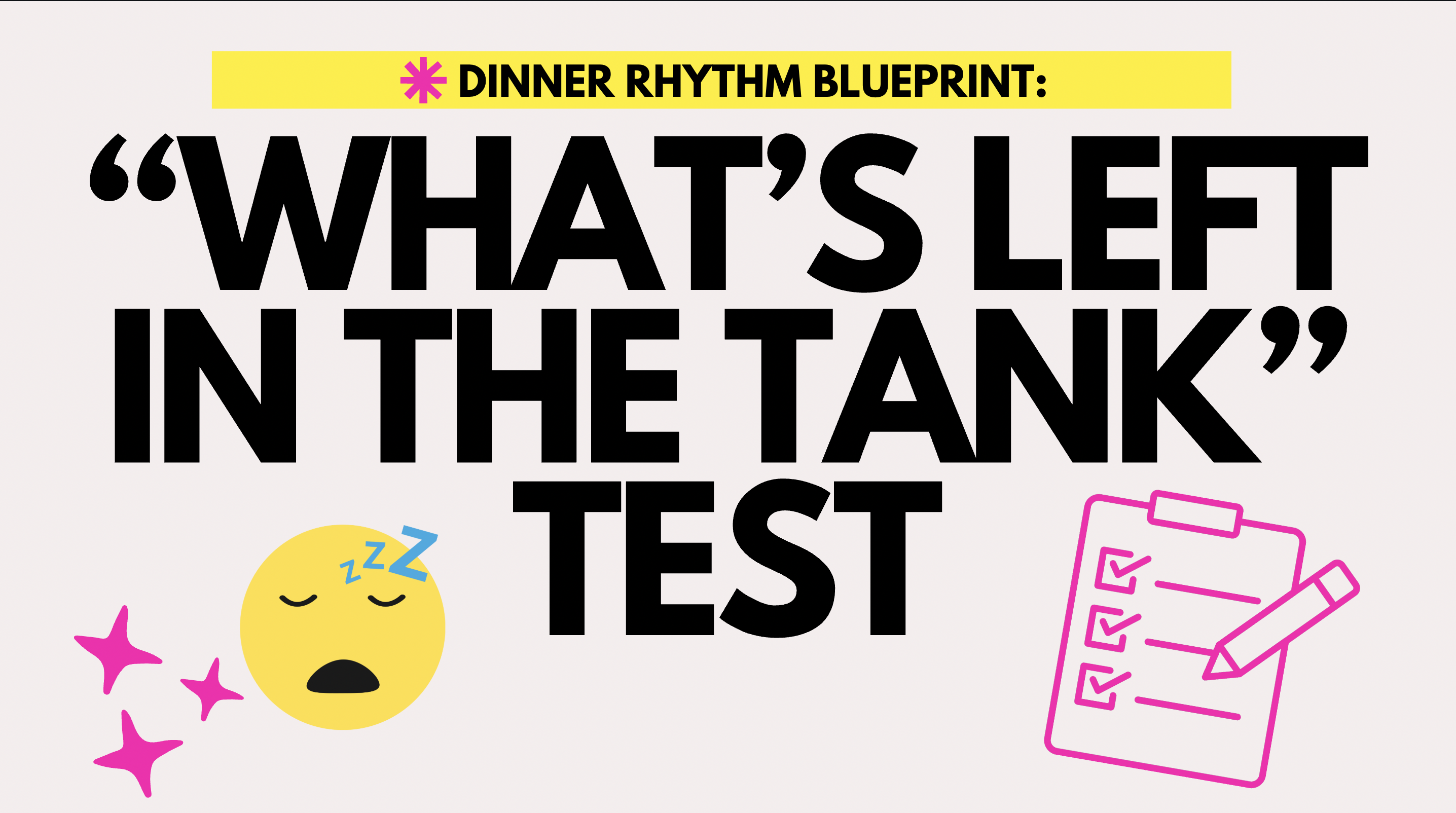
👉 This post is Part 2 of the Dinner Rhythm Blueprint series. If you missed Part 1, start with the Dinner Rhythm Overview or visit the Dinner Rhythm Blueprint Hub to follow along from the beginning.
If your dinner plans keep falling apart by Tuesday, this lesson will show you why. In Part 2 of the Dinner Rhythm Blueprint, we'll walk through the What's Left in the Tank Test-a tool that helps you match your dinners to your actual energy, instead of trying to force meals that don't fit your week.
VIDEO LESSON #2: What's Left in the Tank Test 👇👇
This is the one that will flip how you think about meal planning. In this quick video, I'll walk you through the What's Left in the Tank Test-why traditional meal plans ignore your energy and how to finally design dinners that match your real life.
👉 You can hit play and watch it, or just listen like a podcast while you do dishes. Either way-don't skip this one. It's the heart of Part 2.
PRESS PLAY TO WATCH NOW 👇👇
Grab Your Free Dinner Rhythm Workbook 👇👇
To make this process even easier, I created a free Dinner Rhythm Workbook you can print and use alongside this series. You'll find simple worksheets for each lesson-so you're not just reading, you're actually mapping out your rhythm in real time.
Why This Step Matters
Hey friend-welcome back!
Before we start mapping out your first Dinner Rhythm, I want to press pause on all the logistics… and talk about you.
Not your grocery list.
Not what your kids will or won't eat.
Just you-and how much energy you've got left in the tank on any given night.
Because that right there? That's the most important part. And honestly? It's the part most meal plans completely miss.
If dinner often feels chaotic, this is where the overwhelm really begins. I dive deeper into this in my post The Secret to Stress-Free Family Dinners.
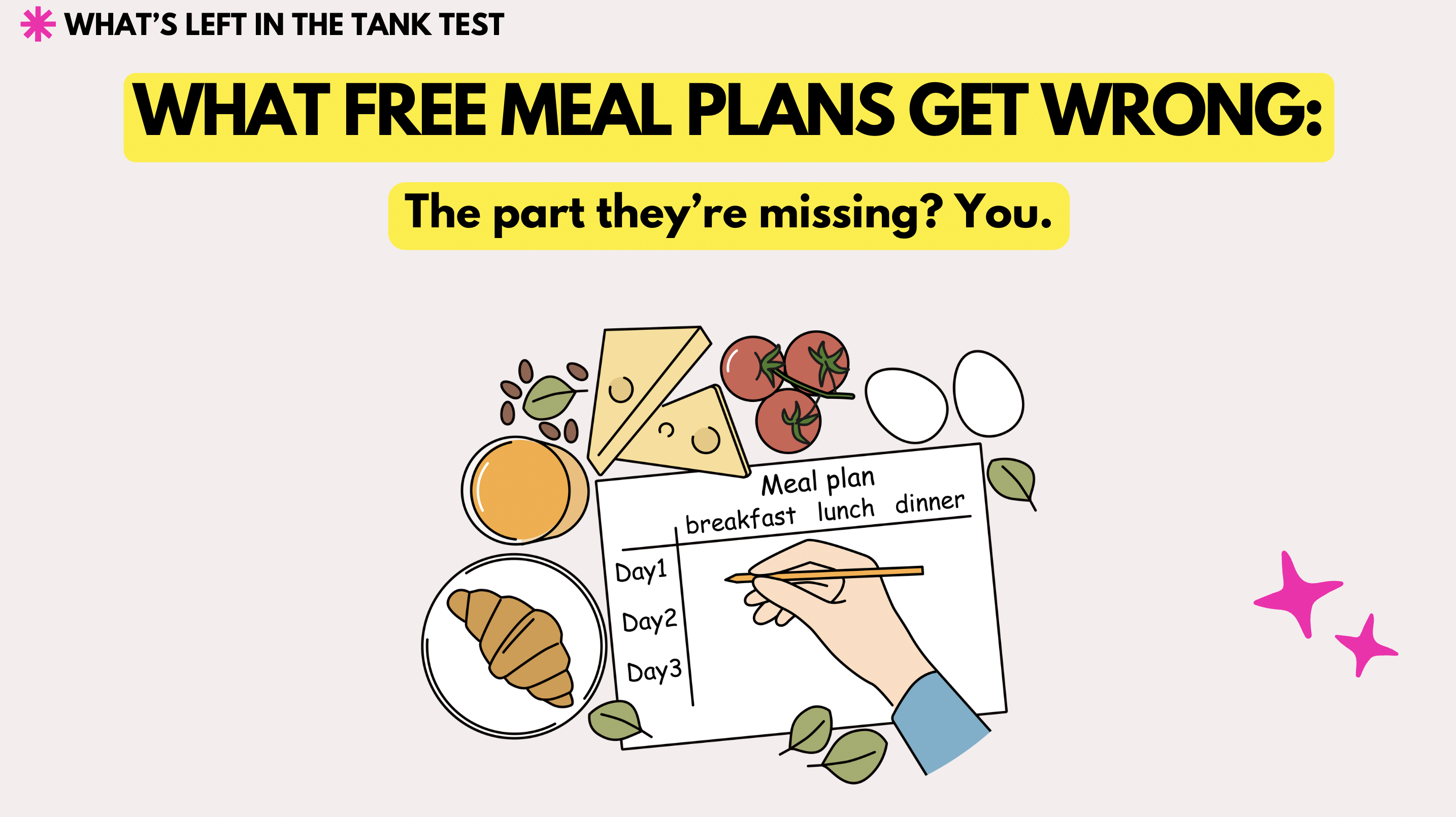
🚫 Why Free Meal Plans Don't Always Work
This is why I don't recommend using free meal plans from food blogs (yep-even mine). Because if you follow them as-is, you're setting yourself up for automatic failure.
Here's why:
- Those free plans might look great. They've got lasagna on Monday, risotto on Tuesday, stew on Wednesday, and a pasta casserole on Thursday.
- And sure, they all taste amazing. But here's the problem:
- You're starting from scratch every single night.
- There are no shortcuts. No batch prepping.
- And they don't take into account your real life-like your son's Wednesday soccer practice or the last-minute work calls that run late.
So what happens? You're left with less time, more pressure, and recipes you don't even want to attempt.
It's not you. It's the system. And honestly? This "method" is doomed before you even start.
👉 For more on this, see Why Meal Plans Don't Work.
✅ Enter: The What's Left in the Tank Test
This is where the What's Left in the Tank Test comes in.
I designed this test to help you take a clear, honest look at your week-so you can finally match:
👉 The kind of dinner you're able to cook with the kind of energy you actually have.
No more guilt. No more shame spirals. Just real life, matched to real dinners.
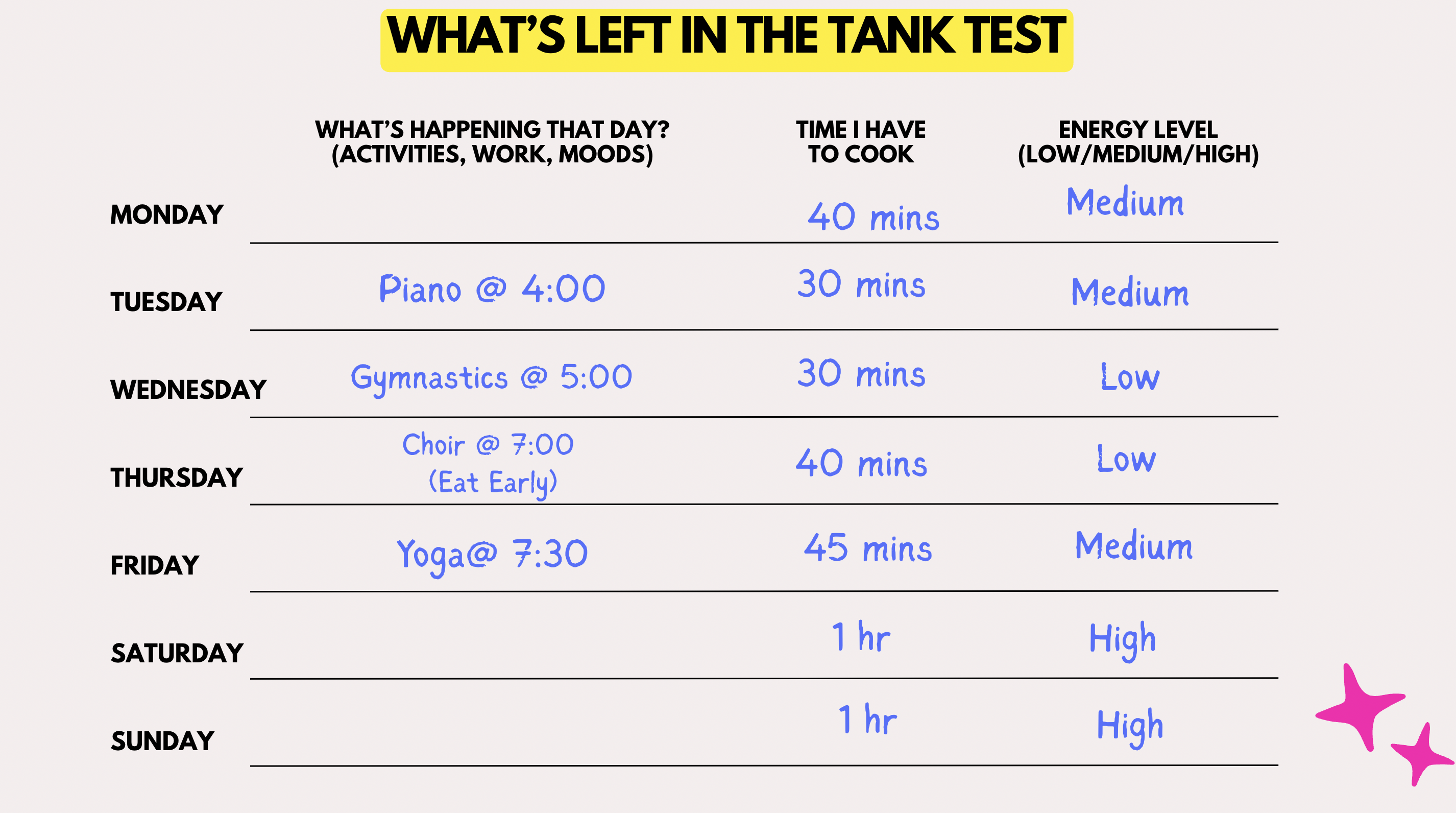
A Real-Life Example
One mom came to me completely discouraged. She'd tried all those free meal plans. Bought the groceries. Set her intentions. And every week-it fell apart.
She thought it was her fault. "Maybe I'm just bad at meal planning."
But here's what really happened:
- She planned too many new recipes.
- She underestimated how exhausting her week really was.
- Life (as it does) got in the way.
Some nights she'd panic-cook and stress herself out. Other nights she'd skip the recipe, toss the moldy ingredients, and feel guilty about the wasted money.
Every week, it was the same cycle: stress, waste, burnout.
But when we walked through the What's Left in the Tank Test? Everything changed.
She realized:
- Mondays: plenty of energy → great night to try a new recipe.
- Tuesdays: soccer practice → no time → wraps and sandwiches on the go.
- Thursdays: lowest energy → Grace Nights (fast, no-fuss ideas).
👉 Same family. Same schedule. Completely different outcome. Dinner wasn't stressful anymore-because her rhythm finally matched her reality.
Want more ideas for low-energy nights? Check out 10 Dinner Ideas for When You're Too Tired to Cook.
Our Motto: Done > Impressive
Here's the motto I want you to remember:
"Dinner doesn't need to be impressive. It just needs to be done."
Because dinner should not be a daily emergency. And if it feels chaotic every night, I want you to hear this loud and clear:
- You are not broken.
- The system you're using is broken.
- You don't need to "try harder."
- You need a better rhythm.
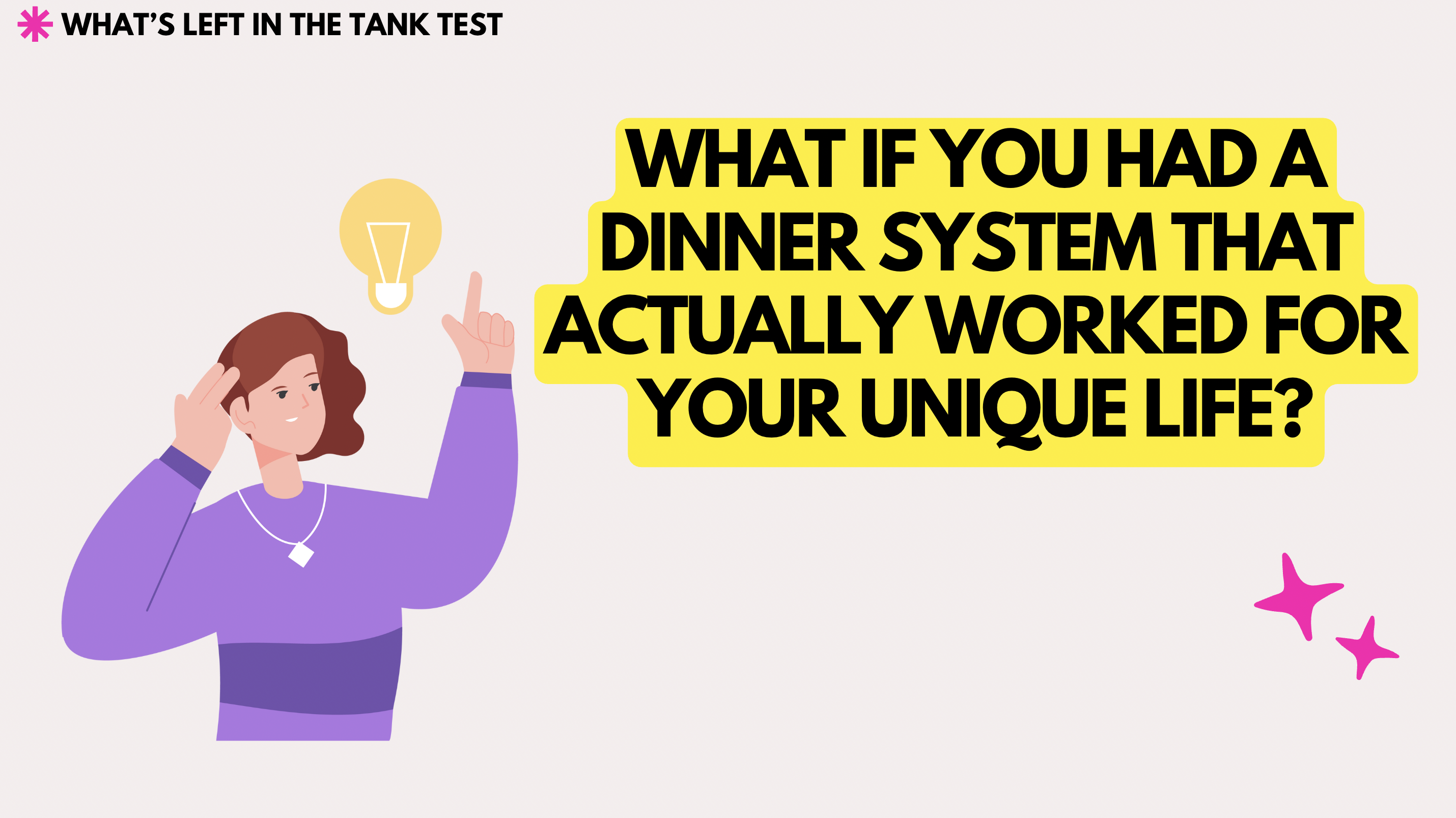
Imagine This With Me…
What if your dinner system actually worked for your unique life?
- Your busy evenings.
- Your random Thursday energy crash.
- Your picky eater.
- Your love of pasta.
- Your total disinterest in cooking anything that takes more than 20 minutes.
👉 What if it all counted?
What if we stopped holding ourselves to Instagram standards-or comparing ourselves to the sourdough mom down the street-and instead built something that actually worked in your real world?
That's what this blueprint is about. Not filling in a chart. Not a Pinterest-perfect plan.
It's about giving you your time back.
It's about giving you your sanity back.
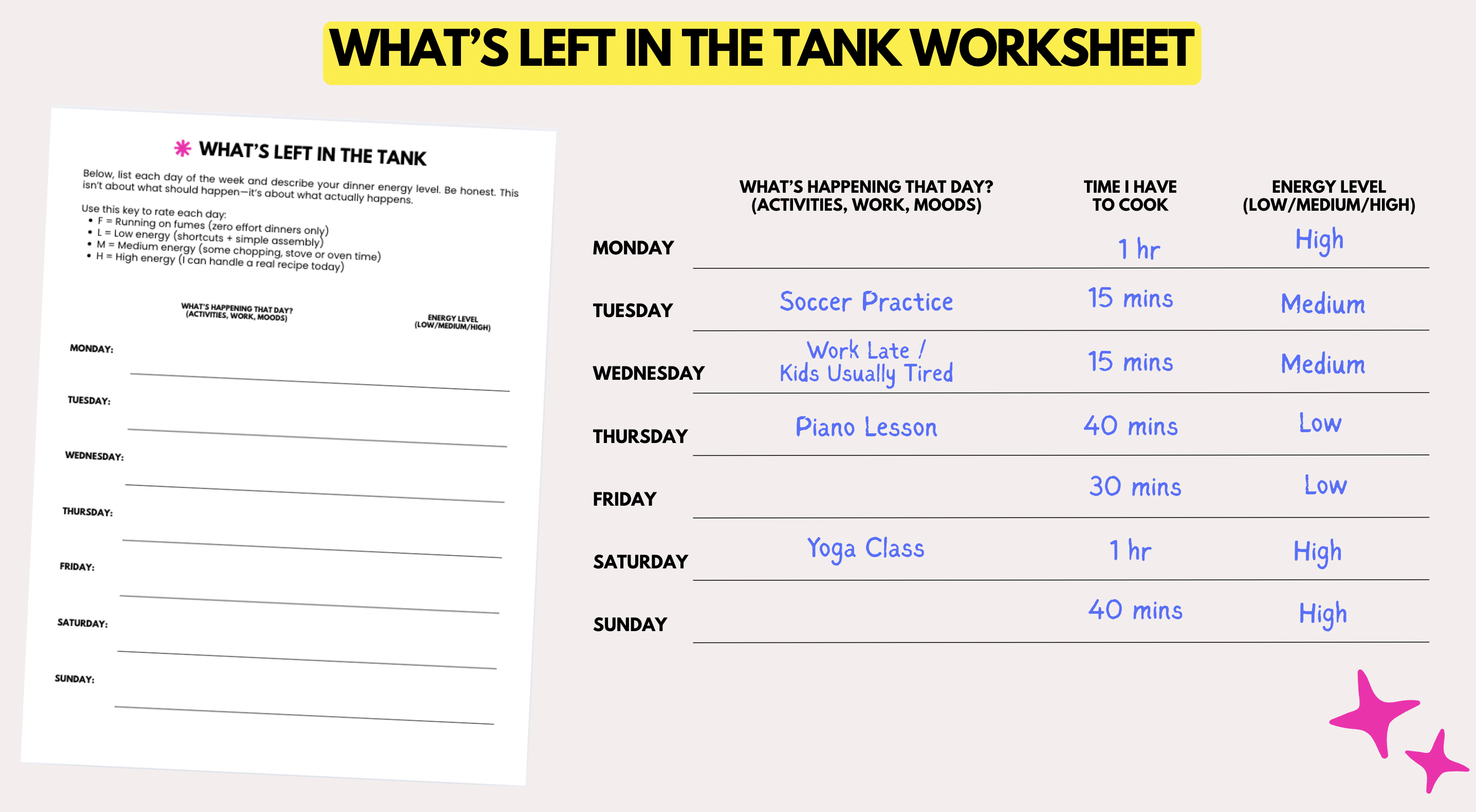
📝 How to Do the What's Left in the Tank Test
Ready? Grab your workbook (or just a notebook) and let's do this together.
This part isn't about filling in meals yet-it's about noticing your energy patterns.
Go day by day and score yourself from 1-10. Then jot a few notes:
- Monday: Do you feel fresh and ready? Or still catching up from the weekend?
- Tuesday: After-school activities? Late work calls? Soccer nights?
- Wednesday: Midweek crash or second wind?
- Thursday: Draining? Or your lowest point of the week?
- Friday-Sunday: Is Friday takeout night? Do you enjoy cooking on weekends-or avoid it altogether? Is Sunday your meal prep window?
👉 The point isn't to get the numbers "right." It's to notice your real rhythms.
From this, you'll start to see:
- Which nights are totally maxed out.
- Where you have low-energy pockets.
- Which days can handle a new recipe.
A Quick Example
Here's what this looked like for me during one season of life:
- Monday: Fresh start → 1 hour to cook → good energy → try something new.
- Tuesday: Soccer night → no time → wraps and sandwiches on the go.
- Wednesday: Energy dip → needed leftovers or one-pan dinners.
- Thursday: Zero energy → Grace Nights (frozen pizza, quesadillas, bagged salad).
- Friday: Takeout or fun dinner night (pizza, tacos).
- Saturday-Sunday: More flexibility for cooking or prepping.
Some nights I had 30 minutes and zero brainpower. Other nights, I could enjoy the process.
👉 That's the beauty of this test: it gives you a visual snapshot of your real capacity. Not your ideal. Not Pinterest-perfect. Your actual life.
FAQs
It's a simple tool where you score your energy for each night of the week (1-10). It shows you when you can cook more involved meals-and when you need shortcuts, repeats, or low-effort dinners like Emergency Dinners.
Because they don't account for your real life. Free meal plans from Pinterest or food blogs look nice, but they assume you have the same energy every night. Spoiler: you don't. That's why by Tuesday, you're already burned out and reaching for takeout. For more on this, see my post Why Meal Plans Don't Work.
Meal plans = rigid lists of recipes.
Dinner rhythms = repeatable patterns (like Anchor Meals, Grace Nights, and Emergency Dinners) that flex with your real life. Read more in 5 Signs You Need a Dinner Rhythm.
Nope! In fact, most rhythms purposely build in shortcuts: leftovers, freezer meals, and scrappy dinners. See Quick Dinner Shortcuts for inspo.
That's normal! The test isn't about locking you into a permanent chart-it's about awareness. Over time you'll see patterns: maybe Thursday is always a crash night, or Mondays are when you're most motivated. Once you spot those patterns, you can plan smarter.
Step 2 is the foundation for Step 3: The Dinner Sanity Quadrant. Once you know your energy levels, you can sort recipes into categories-high effort vs. low effort, mental load vs. autopilot-and match them to the right nights. That's how you start building a rhythm that actually sticks.
Final Thought
Once you've finished filling out your What's Left in the Tank worksheet (available in my free members' library), you'll be able to see your week at a glance. And that clarity makes the next step so much easier.
Because now that we know how much energy you actually have-we can talk about how much effort your meals are really requiring.
That's where we're headed next: The Dinner Sanity Quadrant. You'll learn how to sort your meals based on time, effort, and mental load-so you can finally match the right meals to the right nights.
📌 Your Homework
Finish the What's Left In The Tank worksheets (workbook available here), and I'll meet you in Lesson 3: The Dinner Sanity Quadrant 👇👇
Dinner Rhythm Blueprint: Here's Your Roadmap 👇👇
📌 Part 1: Dinner Rhythm Overview
📌 Part 2: What's Left in the Tank Test (You Are Here 📌)
📌 Part 3: The Dinner Sanity Quadrant
📌 Part 4: The Dinner Rhythm Toolbox
📌 Part 5: Finalizing Your Dinner Rhythm
👉 Want the big picture? Start from the beginning on the Dinner Rhythm Blueprint Hub


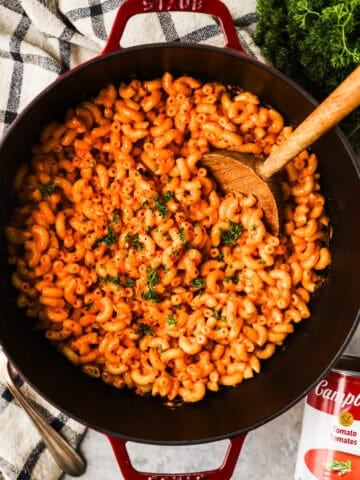
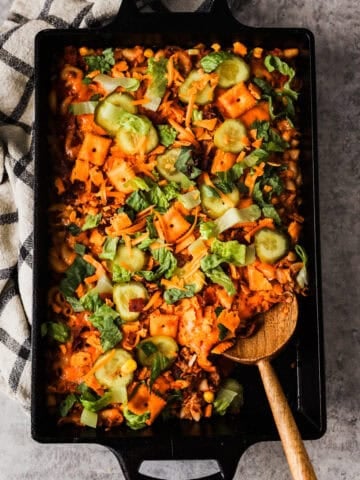
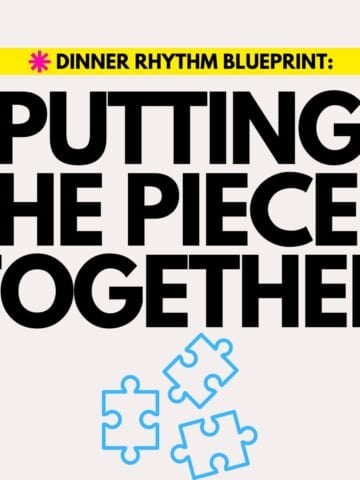
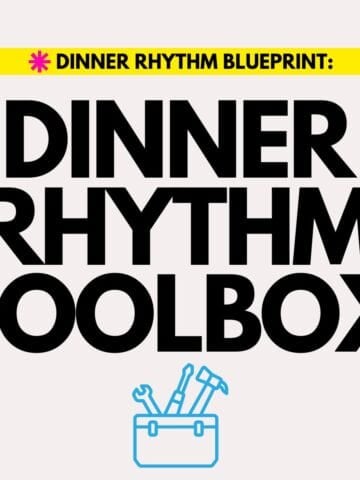
Leave a Reply